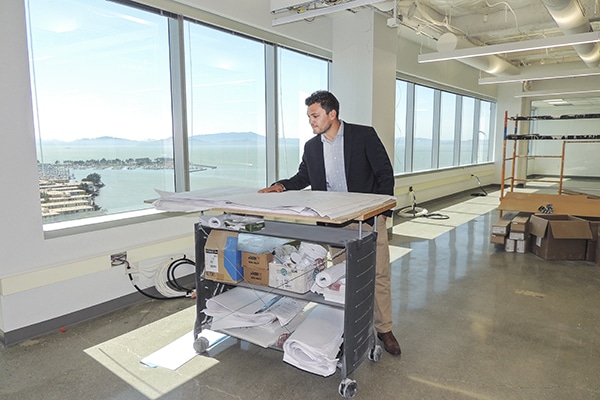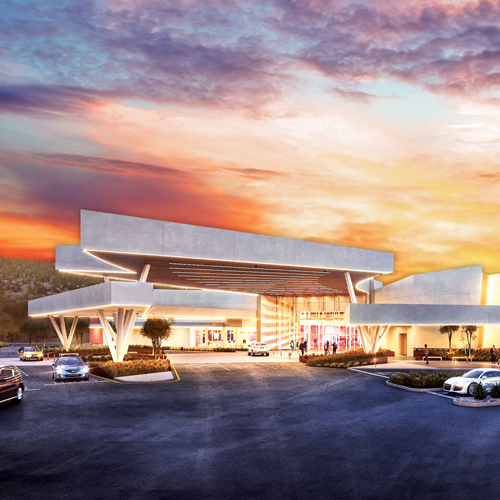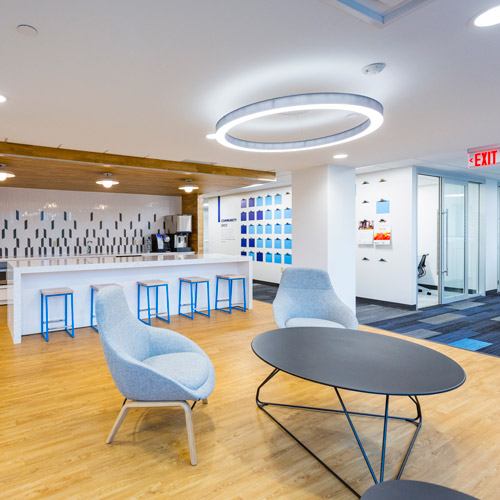Moving headquarters is a logistical challenge for any business, but it’s especially tricky for anyone in the realm of cybersecurity. Any disruption in service can spell disaster for the clients, who require 24/7 protection from malware malfeasance. So, when Tanium, a cybersecurity provider based in Emeryville, California, relocated this past summer, it was up to Joey Martinez, head of facilities and real estate, who’d only joined the company in August 2017, to ensure that the move went smoothly.
The new space expanded the company’s headquarters from about 41,000 square feet to 65,000 square feet, spread over three floors of a high-rise in a business park. Staff occupy the 15th and 16th floors, while the third floor has been configured into a training center, kitchen, and dining area. Due to the expanded scope of the space, Martinez divided the project into two phases.
Phase one involved securing a single permit for all finished concrete work and demolition based on earlier schematic design. This took place in February 2018, three months after the lease was signed. Phase two began in March 2018 and focused on the actual execution of the interior design package. “We had to break it up to get demolition started—to expose any issues with internal systems and give the architects a better look at the space,” Martinez says.
After setting his sights on the 15th and 16th floors as a two-pronged, modern space for employees, Martinez got to work with his team, adding an open ceiling and polished concrete to enhance the industrial infrastructure. “The floor above us housed the HVAC equipment, so wanting an open ceiling while also supporting the floor above us was a challenge,” he says. “It was difficult to visualize, at the leasing stage, what that would look like.”
Likewise, the third floor contained infrastructure for the parking garage, which had to be worked around when planning the training center, kitchen, and dining area. Martinez had to help the building’s owners visualize what the final space would look like, assuring them that comfort could peacefully exist alongside functionality. “We have a 100 percent open plan, and that is a difficult design to achieve in a building like this, which has a lot of curved and jagged edges in its architecture,” he says. “The biggest thing was working with our architects and contractors and using modern design techniques to break the space up into neighborhoods. That helped get buy-in from the owners.”

Another challenge was giving employees the kinds of amenities offered at their original location. “The new building didn’t have as much available, so we talked to property management about using some space on the roof of the parking garage for special events, replacing space we lost in the move,” Martinez says. “This, along with the building management’s renovation of their on-campus workout facility and the ability to bring in other amenities such as daily food trucks, helped us make the decision to move.” So did the opportunity to grow. Tanium signed a 10-year lease with rights to expand. Currently, about 215 people work in the new headquarters, but there is capacity for 270.
“As we grow past that, we can expand the current footprint to 340,” Martinez says, and he doesn’t expect it to stop there. “We are on a path where we’re talking, really, about decades of growth.”
Tanium’s leadership hopes that some of that growth will be fueled by promoting its public image more aggressively. For instance, a plan to add rooftop signage will give the company visibility to the hundreds of thousands of cars that pass by its headquarters every day on the adjacent highway.
“That might be the most valuable part of the building,” Martinez says. “The hope is that many of the people who see the 12-foot-by-30-foot sign will be Googling Tanium and finding out what this company is all about. The common man has not heard of Tanium. Though we are very popular in the cybersecurity realm, we are not a retail product you can buy at a store. We’re not a household brand. It is important for us to get established as a significant company and player in the technology game.”


